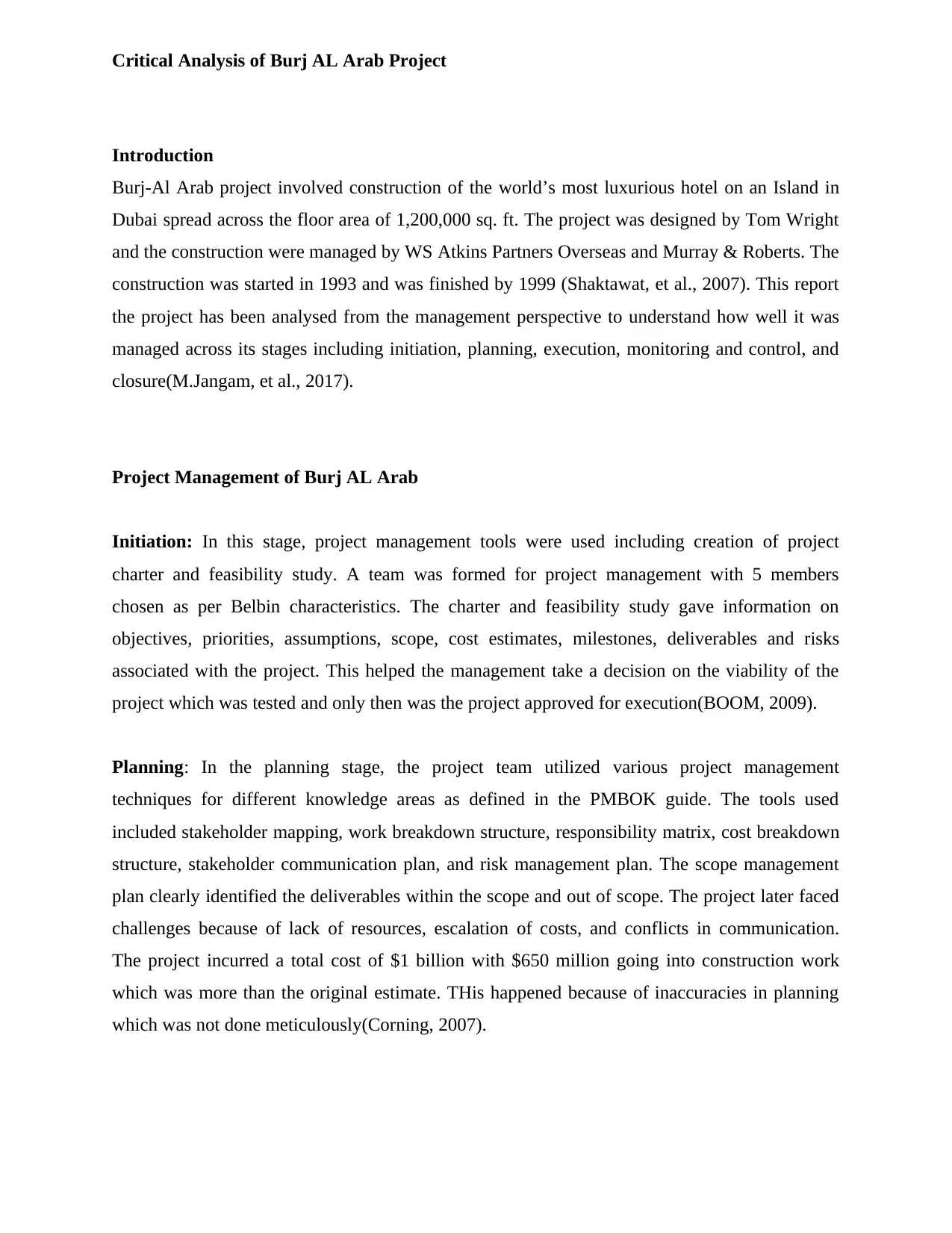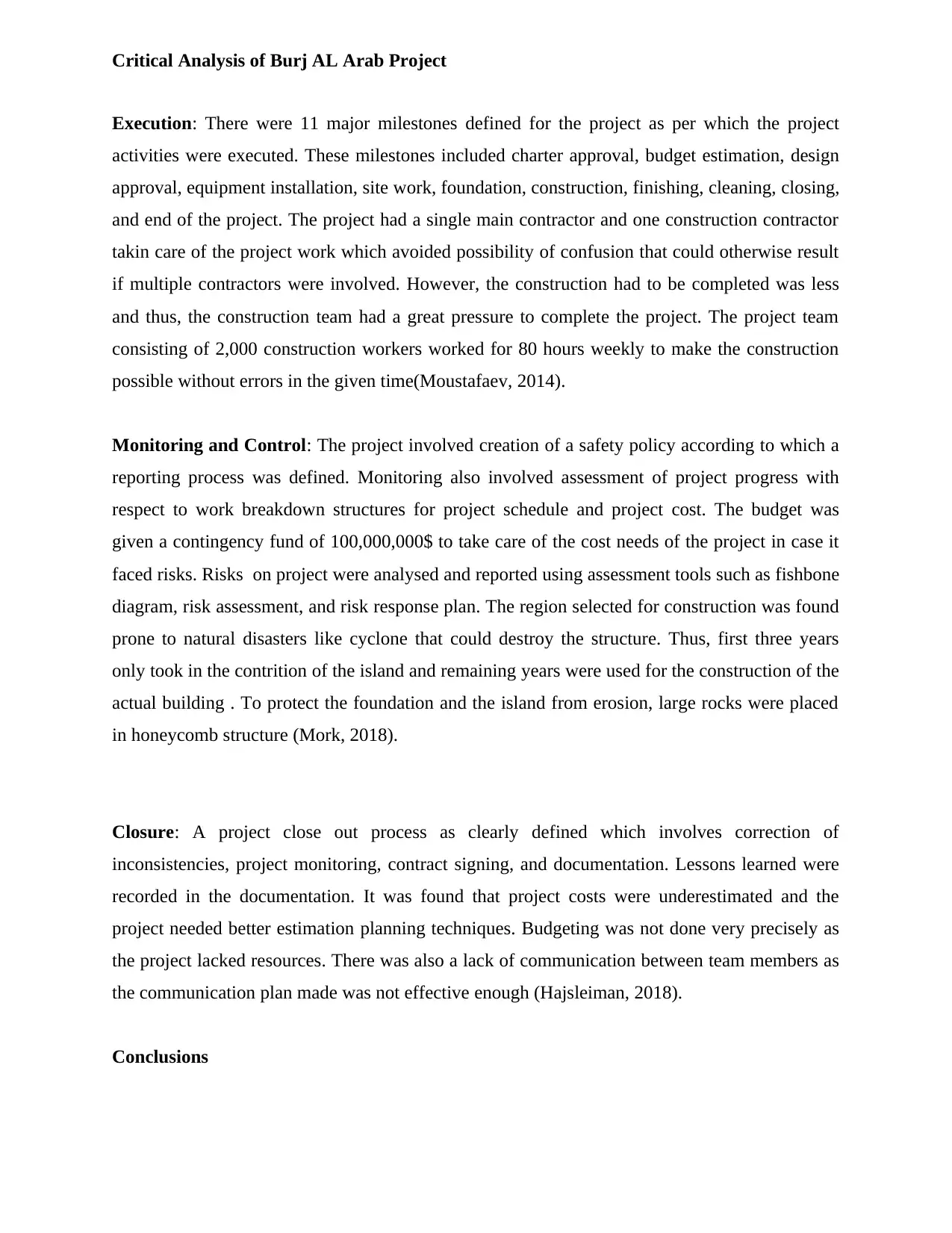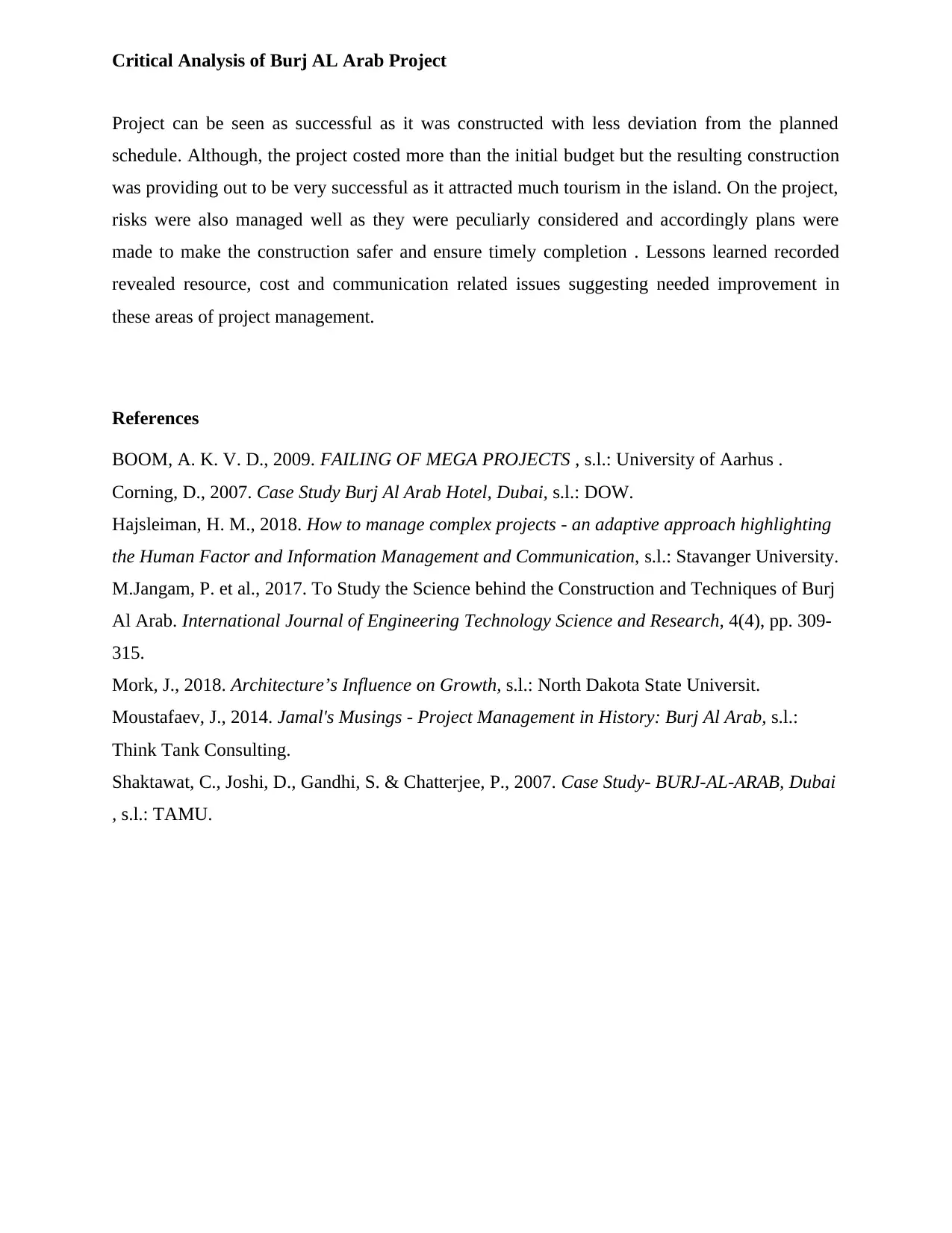A Detailed Critical Analysis of the Burj Al Arab Project's Management
VerifiedAdded on 2021/10/09
|3
|1032
|629
Report
AI Summary
This report presents a critical analysis of the Burj Al Arab project, examining its management from initiation to closure. The project, a luxurious hotel in Dubai, is analyzed through the lens of project management principles. The report details the initiation phase, including the creation of a project charter and feasibility study, followed by the planning stage where tools like stakeholder mapping and work breakdown structures were utilized. The execution phase, with its defined milestones and challenges such as resource constraints, is discussed. The monitoring and control phase, including risk management and safety policies, is also explored. The report concludes with an analysis of the closure phase, highlighting lessons learned regarding cost estimation, resource allocation, and communication. Despite exceeding the initial budget, the project is considered successful, offering insights into effective risk management and timely completion, while also pointing out areas for improvement in cost management and communication strategies.
1 out of 3










![[object Object]](/_next/static/media/star-bottom.7253800d.svg)